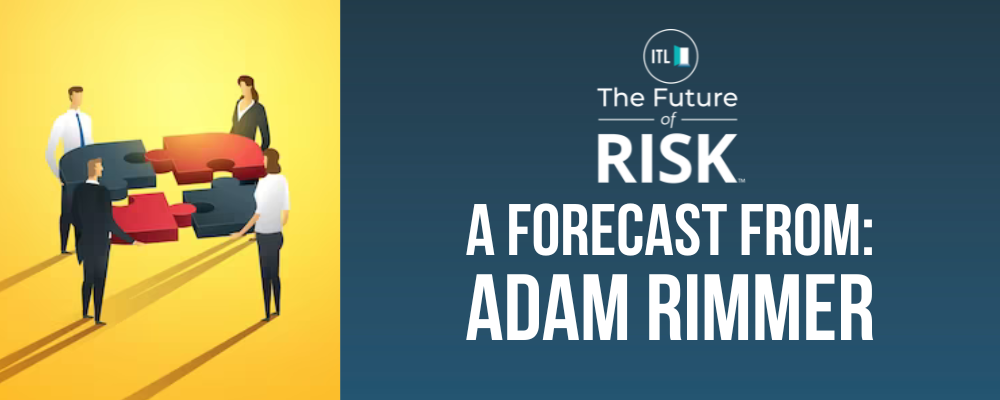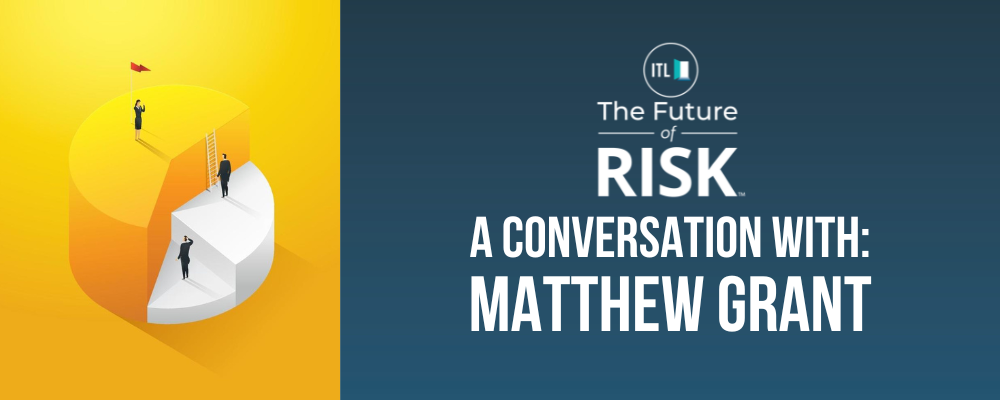 |
Adam Rimmer first saw the potential of parametric insurance while working at RMS, the world’s largest catastrophe modeling firm, since acquired by Moody’s. While there, he and his FloodFlash co-founder Ian Bartholomew structured and modeled triggers on over $2 billion of parametric insurance products and catastrophe bonds to protect governments and large corporations in the U.S. and around the world. They are now using those same principles at FloodFlash, a sensor-based, parametric flood product.
|
Insurance Thought Leadership:
What gaps do you see in the traditional insurance market that FloodFlash is trying to fill?
Adam Rimmer:
The great irony in property insurance is that those who most need coverage are the ones who can't buy it. If you operate in a high-risk area like the coastline, or if you are a class of business that is difficult for traditional underwriters to tackle, such as auto dealerships or specialist manufacturing facilities, the rates can be incredibly high. So you opt to self-insure. The same is true of some coverage types within flood: Business interruption loss is notoriously difficult to price, for example, so businesses in higher-risk areas frequently end up with no coverage at all.
That leads to a big coverage gap. Less than 20% of the $70 billion of loss that is caused by catastrophic floods annually is insured. And that gap is disproportionately among those at high risk.
I consider the flood insurance gap in the U.S. to have two sides: One is a demand-driven gap, caused by homeowners and businesses deciding that it’s not worth purchasing because they consider themselves at lower risk. Companies like Neptune Flood are doing an amazing job at addressing this gap, creating flood insurance that is so efficient and so easy that more people take it up.
The other side is a supply-driven gap: This is among homeowners and businesses that know themselves to be at high risk and want to buy protection. But no supplier is willing to sell it to them at a reasonable rate. Those customers will use the National Flood Insurance Program (NFIP) to cover the first $250,000 (homeowners) or $500,000 (businesses). For bigger losses, they are forced to self-insure.
FloodFlash is focused on that second, supply-driven gap. Its customers are too risky/uncertain for the private flood market and too large for the NFIP alone.
The reason this apparent alchemy is possible — to insure the highest-risk customers and for it to still be profitable — lies not only in FloodFlash’s underwriting algorithms but also in a fundamental property of parametric insurance: Exposing the underwriter to only one variable (the parameter that’s being measured) removes sufficient uncertainty that the underwriter can actuarially justify charging more affordable rates for the first time. Parametric insurance creates a new market.
I don't see any way other than a paradigm shift in approach, like parametric coverage, for the insurance industry to materially close that gap.
Insurance Thought Leadership:
What are the biggest challenges in convincing customers, regulators and insurers about the benefits of parametric insurance?
Adam Rimmer:
The challenge is different for each of those groups. Insurers and reinsurers have been fantastic at grasping the science behind the underwriting and the analysis that means this type of coverage allows them to profitably access risk that they had previously been unable to touch. FloodFlash policies are placed at Lloyd’s of London with Munich Re, the largest reinsurer in the world, and Hiscox, the leading writer of U.S. flood risk in that market. We collaborate closely to ensure that FloodFlash is providing value for customers while simultaneously being a profit center for those underwriters. They believe in the opportunity here. Indeed, Munich Re’s VC arm has now taken on an equity stake in FloodFlash.
Regulators want to protect consumers, and FloodFlash's approach of using site-specific IoT sensors as the triggering mechanism has been important. The difference between a good parametric policy and a bad one is “basis risk,” i.e., How much does your payout under the parametric policy correlate with the loss you experience? The parameter that correlates most tightly with majority of property and property-adjacent flood losses is flood depth at the client site (as opposed to, say, a satellite image, a rainfall index or a nearby river/coastal gauge). FloodFlash originally launched in the U.K., and the team spent time with the Financial Conduct Authority (FCA) through their regulatory sandbox program to make sure the FCA were comfortable that the tight coupling between financial losses and readings from the FloodFlash sensor meant there were likely to be good outcomes for consumers.
For customers — and often their agents — the biggest challenge is perhaps making people comfortable that this new technology and new type of insurance can save their livelihood. That's tougher in insurance than other industries because buyers index on trust and familiarity in insurance. We have overcome that through our growing library of success stories and testimonials and through FloodFlash’s association with those big and trusted names like Munich Re and Lloyd's.
Insurance Thought Leadership:
Is parametric a complement or alternative to traditional insurance coverage?
Adam Rimmer:
Both. It can be a different answer for each client because the biggest factor is what other coverage options are available to them. In the U.K., 75% of customers use FloodFlash as their entire flood program, and the others use FloodFlash to expand their existing coverage -- most often as deductible infill.
In the U.S., the majority of customers use a FloodFlash policy as excess coverage above an NFIP policy. Our team works with agents to structure policies so the parametric trigger points correspond with the exhaustion of the NFIP limits. I also frequently see FloodFlash being used as standalone business interruption coverage. Standalone BI is almost impossible to buy in the traditional flood market if you're in a high-risk zone, but it's simple for FloodFlash, hence our recent launch of the specific Flood BI product. It can be viewed as a complement to their underlying property coverage, or equally as an alternative to traditional BI.
Insurance Thought Leadership:
How is climate change affecting the flood insurance landscape?
Adam Rimmer:
Every year, not just climate change but also population growth and urbanization are increasing flood risk in the U.S. As it gets worse, the traditional market retreats, which is creating more of a gap. Almost every dollar of risk that FloodFlash protects is not risk that was previously covered by a traditional provider. It was previously part of the gap, and FloodFlash solved that problem.
FloodFlash first paid parametric claims when Storm Ciara hit the U.K. in 2020. It was an emotional moment. Our customers were business owners who previously were uninsured and didn't want to be. After the event, FloodFlash experienced incredible gratitude from customers whose businesses would otherwise have not survived.
Insurance Thought Leadership:
What are some other trends you’ve observed in the global insurance market related to flood losses and parametric cover?
Adam Rimmer:
In 2023, the U.S. experienced 26 flood and storm events that each caused over $1 billion in damage. That's the most ever in a single year, even after adjusting for inflation. The increased prevalence of storms and severe losses in a time of wider economic turmoil has led to a very hard insurance market, which in turn is putting parametric coverage on the table for an increasingly wide area of the market. That's a trend that's been particularly strong: customers considering parametric flood options for the first time.
People have been pointing out to me the parallels between parametric nat cat and where cyber insurance was maybe eight to 10 years ago. In both cases, you have this large and growing insurance gap that exists because the risk is very difficult to price. Product and technology developments mean the risk can now be insured for the first time. However, it's not something that happens overnight: Customers and their agents have to be educated not just on the solution but sometimes even on the problem, too. Today, of course, cyber cover is mainstream.
Insurance Thought Leadership:
What has been different about the U.S. market compared with the U.K. one? Any surprises?
Adam Rimmer:
Many differences, many of which I learned the hard way. I've found that wholesale brokers are an incredibly important part of the ecosystem in the U.S. They aren't anywhere near as prevalent in the U.K. And given that wholesalers disproportionately see hard-to-place risks, i.e., the customers where FloodFlash is most competitive, wholesalers have become very important to us.
Timing of insurance purchasing, particularly for hurricane-exposed commercial property, is much more seasonal in the U.S. than in the U.K. In general, there is a much more sophisticated flood insurance market in the U.S.: in the U.K., flood is a default inclusion in both homeowners and commercial policies, so the market for standalone policies only exists when the main carrier is actively excluding flood coverage.
The most surprising element is the difference in policy size. I always expected U.S. policies to be bigger — median revenue, a reasonable predictor of insurance spending, is 2x in the U.S. what it is in the U.K. — but our average policy size is around 20 times bigger in the U.S. than the U.K. And that's just one of the reasons why I'm so excited about what FloodFlash is doing in the U.S. It’s going to be big.








